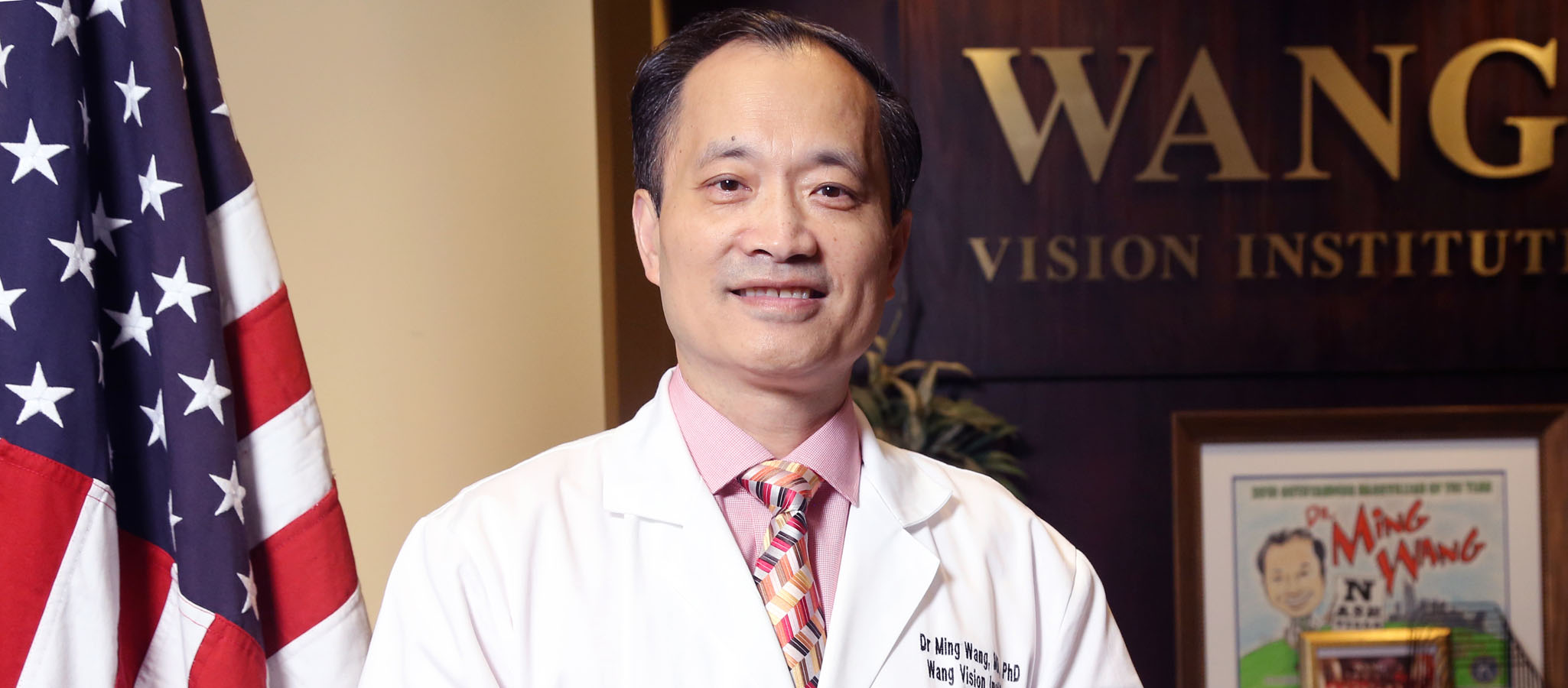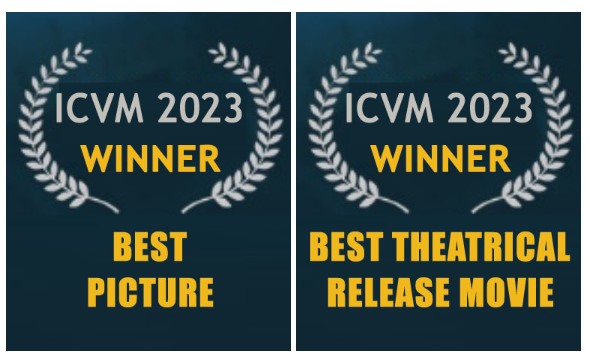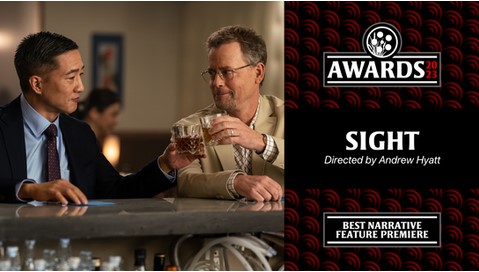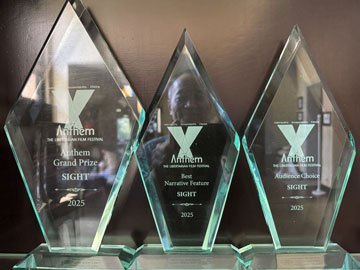By Robert Stringfellow, Mar. 4, 2024, Nashville Christian Family.
The film “Sight”, featuring Greg Kinnear, is based on the autobiography of Dr. Ming Wang, Harvard & MIT (MD, magna cum laude); PhD (laser physics). The movie includes the fascinating story of the invention of the amniotic membrane contact lens, which has now been used in nearly every nation of the world by thousands of eye doctors, and has helped millions of patients to have their eyesight restored.

Wang grew up in Hangzhou, China. In 1966, the Cultural Revolution caused the closure of all universities across the country. The government deported the country’s youth to labor camps in rural areas, and over the 10 years of the Cultural Revolution (1966-1976), 20 million youth were sent away to a lifetime of poverty and hard labor.
In 1974, as a 14-year-old 9th grader, just like millions of others, Wang had to leave school with no hope of ever being able to return. Attempting to avoid deportation to labor camps by getting a job with the government’s song-and-dance propaganda troupe, Wang learned to play the erhu–a Chinese violin–and practiced dancing. In 1976, the Cultural Revolution ended, and the government reopened universities. To attend college, Wang had to re-enter school and jump from 9th to 12th grade. Furthermore, he had to compete against other 12th graders for a 1% chance of getting into college. His parents advised him to do this since there was no guarantee that the government would not shut down the schools again! Too poor to make copies of the review study questions, his parents hand-wrote and drilled Wang 19 – 21 hours a day. He studied around-the-clock, became one of only four 12th graders from his province to be admitted into college, and was accepted into the prestigious University of Science and Technology of China. In college, a visiting American professor who was impressed by Wang’s persistence and tenaciousness helped him secure a teach- ing assistantship at the University of Maryland; so on Feb 3, 1982, Wang stepped off a plane in Washington, D.C. with only $50, a student visa, and a Chinese-English dictionary. He worked hard, earned two doctorate degrees–one in laser physics and one in medicine–and graduated magna cum laude with the highest honors from Harvard Medical School and MIT.
Wang came to Nashville in 1997 as the founding director of Vanderbilt Laser Sight Center and founded the internationally known Wang Vision Institute in 2002. He performed the world’s first laser artificial cornea implantation and over 55,000 procedures (including on over 4,000 doctors). Wang published an article in the world-renowned journal “Nature,” as well as more than 100 other scientific papers and 10 textbooks. He holds several U.S. patents for his invention of biotechnologies to restore sight. Wang was chosen to be NPR’s Philanthropist of the Year, and received the Honor Award from the American Acade- my of Ophthalmology and the Lifetime Achievement Award from the Association of Chinese American Physicians. Wang founded the non-profit Wang Foundation for Sight Restoration, which to date has helped patients from over 40 states in the U.S. and 55 countries, with all sight restoration surgeries performed free-of- charge. He was named the Kiwanis Nashvil lian of the Year for his lifelong dedication to helping blind orphan children from around the world.
Wang is also passionate about another type of vision, i.e., helping others to see that science and faith are friends, not foes. While studying the human eye at Harvard Medical School and MIT, Wang was confused and struggled to understand how the random events of evolution could create such a complex structure such as the human eye in such a short amount of time, so he asked a professor about it. “The professor opened a window to the Lord in my heart,” Wang says. “I began to understand that there is a Creator for everything, so I became a Christian.”\
Wang found himself at the center of today’s science vs. faith conflict while researching ways to reduce corneal scarring in order to restore sight after injury. He learned that while adult eyes develop scars after injury leading to blindness, a fetus’s eye actually does not scar. He wanted to understand how this scarless process happens in a fetus so he could find ways to restore eyesight for his adult injured patients. He needed to do fetal tissue research but at the same time, he did not want to endanger a fetus. He prayed for wisdom and felt God had led him to James 1:4 about perseverance, so he persevered, for nearly 20 years, attempting to find a way to conduct scarless fetal wound healing research but without hurting a fetus. Finally his decades of hard work paid off, he and other scientists found the solution. They discovered that a unique piece of tissue—the amniotic membrane that surrounds the fetus–has the same magical scarless healing proper- ty as the fetus. This membrane is typically discarded with the placenta after birth. Wang began collecting donated amniotic membranes, trans-planting them onto injured eyes and found that the eyes can now indeed heal without scar thereby preserving sight. This discovery led to his invention of the amniotic membrane contact lens, for which he obtained two U.S. patents. To date, the amniotic membrane contact lens has been used by thousands of eye doctors throughout the world in nearly every nation, and millions have had their eyestight restored. To Wang, this medical breakthrough is an answer to his prayer. He says that his years of hopelessness and darkness have enabled him to emotionally connect with his patients, understand their suffering, and be resolved to do whatever he can to help them.
Today, much of Wang’s pain from the past has been transformed into joy. He was able to honor his parents by taking them into his home to enjoy their sunset years. He played the erhu as a teenager in the Cultural Revolution to avoid deportation, but now he plays it to express his appreciation for God’s blessings. He also combined the music and dance that he had to learn to survive in the past but now has grown to love to create a fundraiser, aptly named The EyeBall, which raises funds for the Wang Foundation for Sight Restoration. Wang also has a heart for the people of China, for which 95% of its 1.4 billion citizens are atheists. The Wang Foundation for Christian Outreach to China distributes Bibles there and pairs recipients with Christian pen pals.
Leona Walthorn





